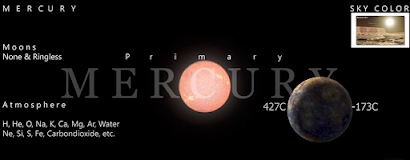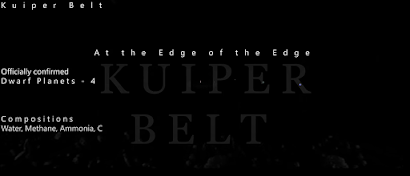WHAT'S BEYOND EARTH & How our sun looks from different planets by SCIENSIC in Tamil
Beyond Earth by Sciensic is available on Major Platforms.
Beyond Earth Full Documentary Video 4k
Study Materials:
Our Sun
On the human scale of time, the sun's age is 39. It was formed 4.6 billion years ago. Born from the dense cloud of gas and dust.
நம் மனிதனின் வயது அளவுகோலோடு ஒப்பிட்டு பார்த்தால் சூரியனின் வயது 39. சூரியன் 460 கோடி வருடத்திற்கு முன் உருவானது. அடர்ந்த மேகக்கூடத்தின் இடையே ஏற்பட்ட வெடிப்பினால். .
Formation of Terrestrial Planets
Our solar system had two layers; the inner layer was hot and filled with fragments during the explosion, where the terrestrial planets formed.
The outer layer is cold and filled with dust and gas clouds, where the gas giants formed.
வெடிப்பு ஏற்படும்போது சுற்றி இருந்த மேகங்கள் வெகு தொலைவிற்கு தள்ளப்பட்டது. இடையே உள்ள வெற்றிடத்தில் புதன், வெள்ளி, பூமி மற்றும் செவ்வாய் கிரகங்கள் உருவாகின. தள்ளப்பட்ட காற்றுமண்டலத்தில் வியாழன், சனி, யுரேனஸ் மற்றும் நெப்ட்யூன் கிரகங்கள் உருவாகின.
The
Inner Region contains Mercury, Venus, Earth, and Mars
Outer Region contains Jupiter, Saturn, Uranus, and Neptune.
Primary - Mercury
The first planet we heard about in early school was.
Burning hot day. Freezing cold night. Mercury has nothing better to offer.
It could be the second planet where we can survive longer. On Earth, we can live up to 78 years on average, whereas on Mercury, it's up to 2 minutes, and on any other planet, it's not even a second.
அதீத வெப்பம் கொண்ட பகலும், உறையும் குளிர் கொண்ட இரவும் பெற்றுள்ளது. புதனில் மனிதன் 2 நிமிடம் வரை வாழலாம், பூமியில் 78 வருடம், மற்ற கிரகங்களில் ஒரு வினாடி கூட வாழ இயலாது.
Hellish - Venus
Due to the greenhouse effect, consistent 465C temperature at day or at night, at the equator or at the poles, stormy weather, dense clouds, sulphuric acid rain, and of course, HELL. A day is longer than a year.
இங்கு பைங்குடில் விளைவால் பகலும் இரவும், எங்கு சென்றாலும் கடும் வெப்பம் கொண்டிருக்கும். சூரியனை மறையவைக்கும் அடர்ந்த மேகங்களும், புயலும், அமிலமழைகளும் கொண்டிருக்கும். மற்றும் ஒரு நாளானது ஒரு வருடத்தை கடந்து நீள்கிறது.
The next home - Mars
Of course, Mars would be the next stop.
Except for its carbon dioxide-rich atmosphere, for now. But, future technology can transform it habitable planet. And the day is near.
நாம் வாசிக்க முயற்சிக்கும் கிரங்கங்களில் முதல் இடம். இதன் கார்பன் டையாக்சைடு வளிமண்டலத்தை தவிர்த்து பார்த்தால் இது வாழ தகுதி உள்ள ஒரு இடமே.
The Partition - Asteroid belt
Millions of asteroids and 1 dwarf planet. Dwarf planets will be explained in detail at the end of this video/blog.
கோடிக்கணக்கான சிறுகோள்களும் ஒரு குறுங்கோளும் பெற்றுள்ள பகுதி.
Formation of gas giants
As said, the outer part is filled with a cloud of dust and gases. The core of gas giants gathered them with their gravity, formed a thick atmosphere and grew big. So there is no surface to land on.
சூரியன் உருவானபோது தள்ளப்பட்ட காற்றுமண்டலத்தில் வியாழன், சனி, யுரேனஸ் மற்றும் நெப்ட்யூன் கிரகங்கள் உருவாகின. அதன் ஈர்ப்பு விசைமூலம் சுற்றிருந்த காற்றை இழுத்துக்கொண்டு பெரிய வடிவம் பெற்றது. வெறும் மேகங்களை கொண்டு உருவானதால் இவையுள் தரையிறங்க முடியாது.
Mightier - Jupiter
From freezing coldness outside, and as you sink unbearable hotness at the deep. There is no scope to colonise, but there is a possibility to colonise their moons due to the existence of water.
வியாழனின் மேற்பகுதியில் உறையும் பணியும் உட்பகுதிக்கு செல்ல செல்ல அதீத வெப்பமும் பெற்றிருக்கும். தரையிறங்க நிலப்பகுதி இல்லாததால் இது வாசிக்கத்தக்கதல்ல. ஆனால் இதன் நிலவுகளில் வாசிக்க வாய்ப்புள்ளது.
Grand - Saturn
Rings. All gas giants have rings. But Saturn's rings are grand. Rings will form when an object gets too close to a planet and so torn apart. Saturn has a scarifying sound, too.
ஒரு கிரகத்துக்கு வளையம் எவ்வாறு அமையுமெனில் ஏதேனும் ஓர் விண்கற்களோ, நிலவோ, அக்கிரகத்தை நெருங்கும்போது வெடிப்பு ஏற்படும். அதனால் வெளிப்படும் துகள்கள் அந்த கிரகத்தை சுற்றி வலையமாய் உருமாறும்.
Mysterious - Uranus
Like Venus, Uranus also rotates in the opposite direction. And its 97.9 degrees axial tilt makes it a more majestic and mysterious appearance, as you can see, its rings are vertical.
யுரேனஸ் 97.9 டிகிரி சாய்ந்து இருப்பதால் அதன் வளையங்கள் செங்குத்தாக தென்படும்.
The Extreme - Neptune
In my opinion, this is my favourite planet. Comment on you're favourite too. It is now the farthest planet in the Solar system, reaching extremes in everything.
மிகவும் தொலைவான கிரகம். இதை தண்டி உள்ள கிரகங்களை நாம் குறுங்கோள்கள் என்று அழைக்கிறோம்.
At the edge of the Edge - Kuiper Belt:
It is similar to the asteroid belt with some dwarf planets. To be a planet, all planets should clear their orbit without any obstacles in their way.
But dwarf planets passing through the asteroid belt or Kuiper belt, due to a lack of domination over their orbit, are disqualified from being a planet and demoted to Dwarf Planets.
ஒரு கிரகம் கிரகமாக இருக்க அதன் சுற்று பாதையில் தடங்கள்களை தள்ளி அதன் ஆளுமையை நிலைநாட்ட வேண்டும். அவ்வாறு தடங்களோடு சுற்றிவரும் கோள்கள் சுற்று பாதையில் ஆளுமை இல்லாத காரணத்தால் குறுங்கோள் என்று அழைக்கப்படுகிறது.
இக்காரணத்தினால் தான் ப்ளூட்டோ குறுங்கோள் ஆனது.
Officially Declared Dwarf Planets:
Other Dwarf Planets:
Also, check
Dr Stephen Hawking on the Evolution of Mankind
Dr APJ Abdul Kalam about Earth, Sun & Milky Way
Up next
Soular - Habitable Episode 3 Teaser Trailer
Editor's Note - The above-provided information may be changed or modified in the future.
























Comments
Post a Comment